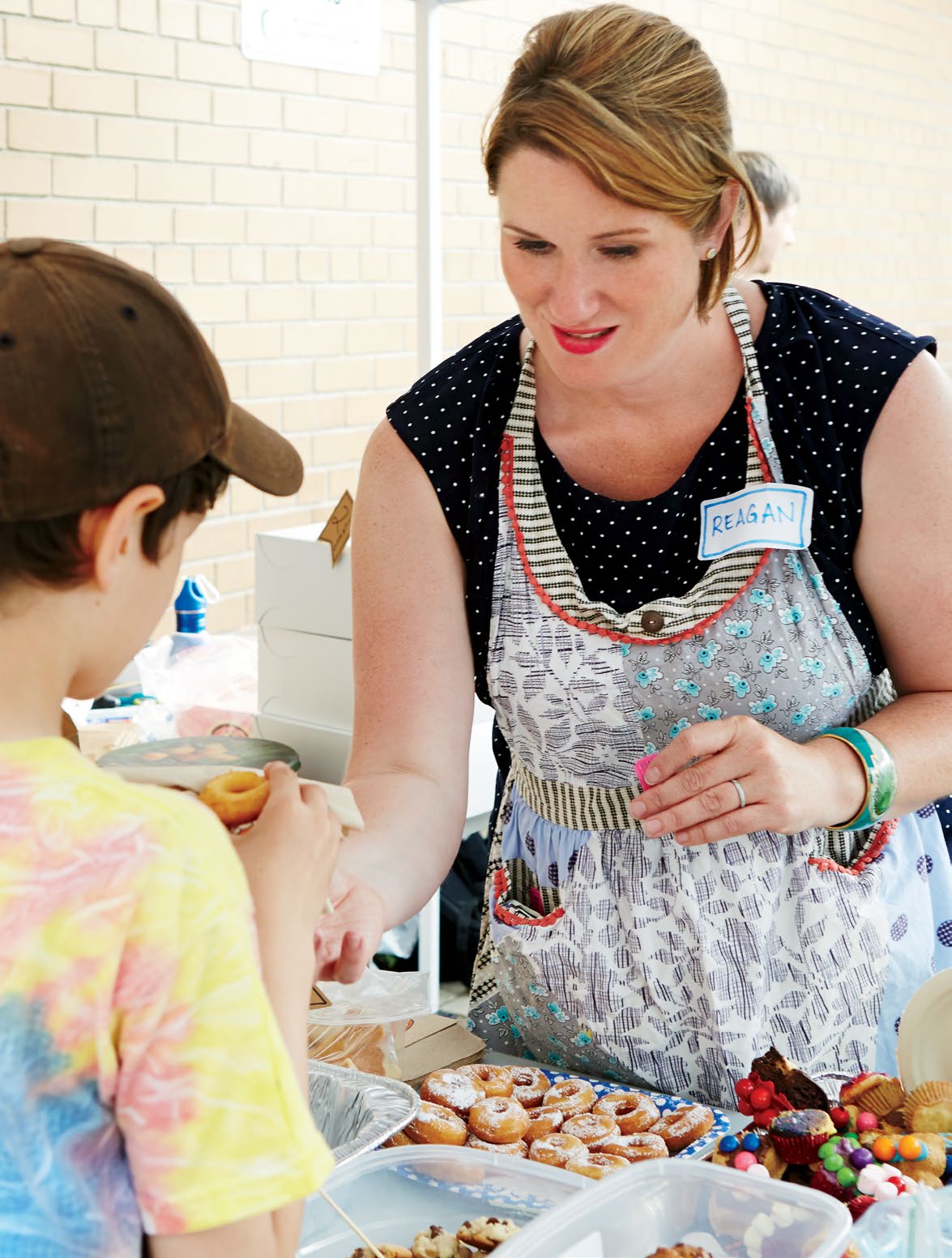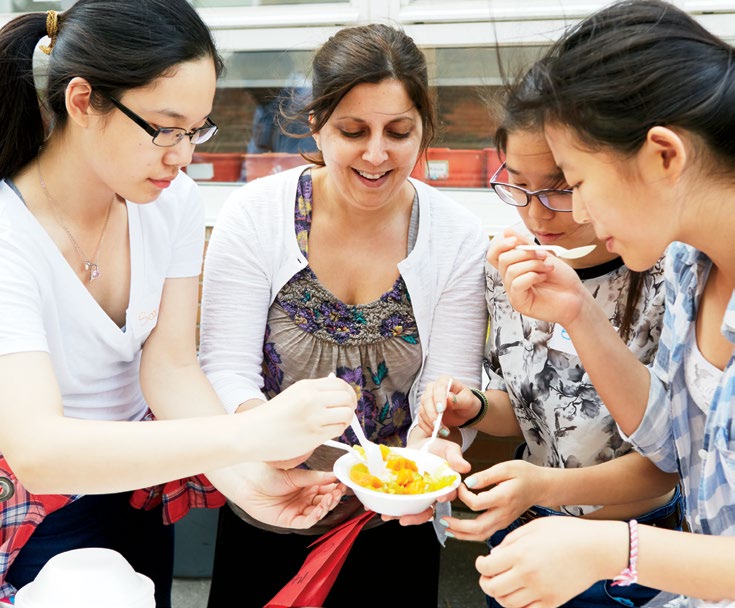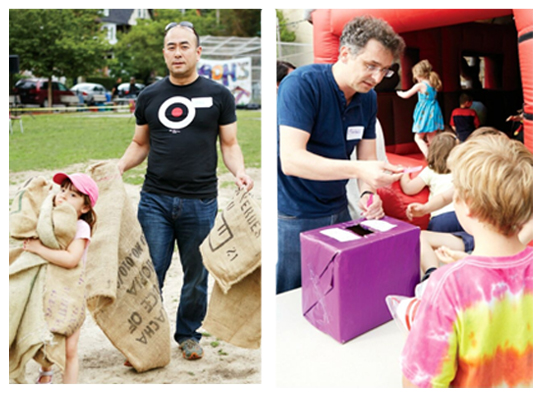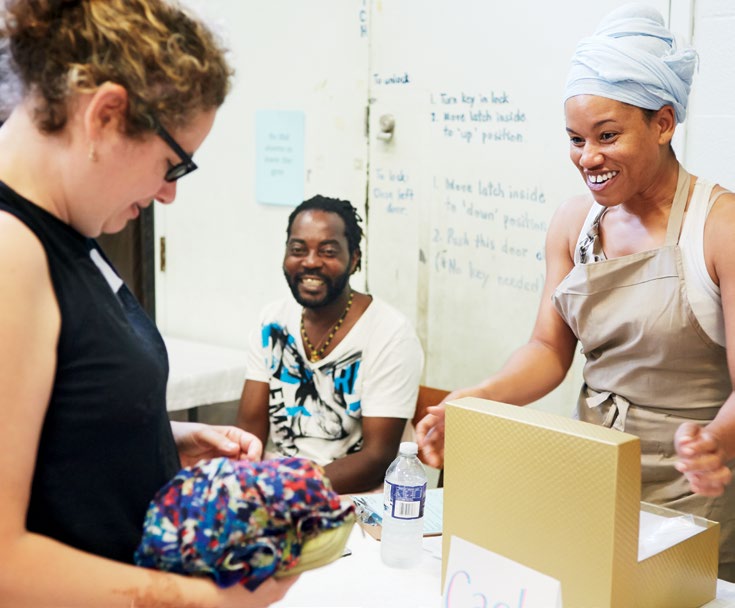Share this page
By Melissa Campeau, with files From Melissa Martz
Photos: Joanne K

"Close your eyes, everyone,” Trina Tran, OCT, instructs the 17 excited students in her kindergarten class at Leslieville Junior Public School in Toronto. “Our mystery reader is here!” Parent volunteer Mike McCann, who has willingly rearranged his workday to visit the school, slips into the room carrying a small stack of books and takes a seat, cross-legged, on the carpet with the children. “OK boys and girls, open your eyes,” says Tran. There’s a chorus of giggles and a few shouts of “I know you!” from the children. McCann’s five-year-old son is beaming, surprised and delighted to see his father.
McCann is on-site to read a new story to the students, something Tran regularly invites school volunteers to do as part of her Mystery Reader program. She also welcomes parents and involved school and local community members to help with school trips, fundraisers, special in-class events, as well as everyday activities like craft projects, Lego building and science experiments.
Volunteers have become an integral part of the classroom environment — not to mention they bring different skills and a fresh perspective to the learning environment.

In some cases, volunteers not only bring an extra pair of hands to class — the success or failure of a program depends on them. Bernie Pickett, OCT, who retired from a 31-year teaching career in 2013, is a big part of why St. Mary’s High School in Kitchener still has a football team. Coaches for the sport are in short supply, and Pickett was concerned that the program where he taught for 23 years would suffer. So, he volunteered to help the team. For Pickett, it’s a matter of continuing to use his talents where they’re needed the most. “Teachers spend their careers developing the skills to help students, parents, colleagues and the school community,” he says. “Why wouldn’t a teacher want to continue to use and share these qualities?”
Martin Bertrand, OCT, superintendent of Conseil des écoles publiques de l’Est de l’Ontario (CÉPEO), says his school board counts 862 volunteers on its roster. “These individuals share their knowledge and skills with the students,” he says. “That’s a priceless contribution.” Bertrand points out that when students see the helpers in action, it can inspire them to become volunteers themselves.
To help keep volunteers engaged in school activities, Bertrand’s board makes the offering of time and services easy from the outset. CÉPEO partnered with the Ottawa Network for Education (onfe-rope.ca), a site that lists available volunteer positions, posts an online registration form and offers resources for prospective volunteers. “People from all over the city can access it,” says Bertrand. “When someone is looking for ways to volunteer, they can visit the site and see a list of what [positions are] available.” And when schools need a candidate with a particular set of strengths, they can quickly connect with the right person.
Even without an external online resource, administrators can simplify the volunteering process by providing information on how to apply and what’s expected of the volunteers on the school and board websites. The school can then develop a consistent process for placing volunteers in the most appropriate positions. The Ontario College of Teachers recommends that school boards screen volunteer candidates through background checks first.

Matching the appropriate person with the task is critical for everyone involved. “It’s important to find the right fit for volunteers based on their area of interest, their expertise and the time they are willing to give,” explains Antonia Pottier, OCT, who teaches kindergarten at St. Anne Catholic Elementary School in Kitchener. If a volunteer is creative, he might want to help with an art class, suggests Pottier. If someone else has a background in technology, she might share her expertise in a computer class.
Whether they’re helping out at the annual fundraiser, escorting a class on a field trip or directing a school play, most volunteers offer their time because they identify a need, want to help and enjoy working with children. But, as with paid employees, recognition of effort and a job well done can go a long way toward building engagement and enthusiasm.
Bertrand’s board, for example, gives certificates and letters of thanks to its volunteers, while the individual schools organize special activities, such as end-of-the-year BBQs and invitations to the last parent council meeting of the year, to show their appreciation during a volunteers-themed week, Semaine d’Action des bénévoles.

Some schools co-ordinate large events to honour all their helpers at once. Laura Kelly, an eight-year volunteer at St. Clement Catholic Elementary School in St. Clements, Ont., says her school invites volunteers to a celebratory breakfast during National Volunteer Week. Suddaby Public School in Kitchener hosts an annual tea party where volunteers receive a plant and a personal note of thanks from students.
In addition to schools recognizing their volunteer network, individual classes might also consider recognizing their volunteers. Tran has turned giving thanks into a class activity by taking digital photos of her students holding up the letters of the words “Thank You.” Students then paste the image onto construction paper and work together to come up with an appropriate, personalized message for the helper.
Other schools might wish to make a donation to a favourite charity in a volunteer’s name (or all of the volunteers’ names). And, for outstanding members of the community, schools might even want to nominate them for awards at the regional, provincial or national level.
Cultivating a team of interested and committed volunteers who bring their experience and enthusiasm to students can have a positive impact well beyond the walls of the classroom. “Volunteers help bring the community and the school together,” says Tran. “And that’s a great thing, since everyone in a community has a stake in the students’ success.”

When things go right — and engaged and capable volunteers help to keep a busy classroom or event running smoothly — teachers find themselves having more time to spend with the students. Here are five ways to get the most out of your volunteers.